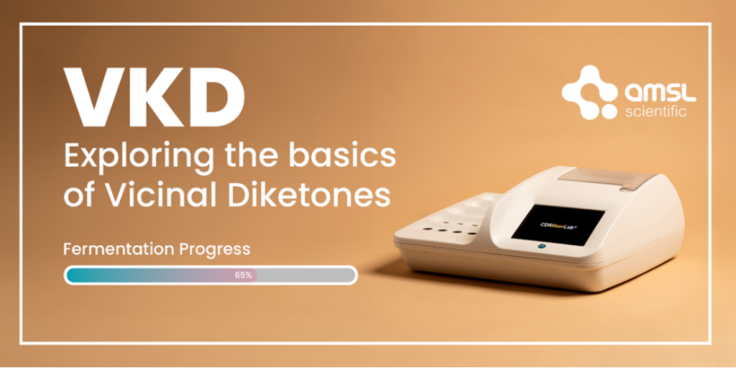Where brewing artistry meets science: Exploring the basics of Vicinal Diketones (VDKs) November 2023

Each sip of beer tells a story of mastery, innovation, and unwavering commitment to excellence. Measuring Vicinal Diketones (VDK) is a key part of that process.
VDK is a by-product of the fermentation process and by measuring it, brewers can determine the perfect time to bottle and address contamination issues when fermentation goes off-course.
Enhancing Brewing Mastery with CDR BeerLab
Implementing CDR BeerLab can help brewers ensure consistent quality of the final product. One of the more important functions of the CDR BeerLab is its ability to accurately quantify the overall VDK levels with a detectable sensory level of 0.05ppm.
Accurately measuring VDK levels can help brewers:
- Identify potential contamination risks
- Monitor fermentation progress
- Assess butterscotch flavour intensity
This next-generation tech can be operated in-house to detect contamination earlier and avoid expensive remediation.
How is VDK formed during fermentation?
During yeast fermentation, diacetyl and 2,3 Pentanedione are two significant by-products of fermentation formed in beer, commonly known as VDKs. They are released from the yeast cell during fermentation and reabsorbed by the yeast when fermentation is complete. Undesirable microorganisms such as bacteria or wild yeasts also produce VDK during fermentation and may not be completely reabsorbed.
Guarding Against Contamination
Elevated VDK levels can signal the presence of unwelcome bacterial intruders, such as Lactic Acid Bacteria: Pediococcus, and Lactobacillus. These microorganisms can introduce off-flavours and disrupt the brew’s intended character. By detecting elevated VDKs early, brewers can take swift action to address contamination risks and salvage their batches before quality is compromised.
Fermentation Insight: Diacetyl Reabsorption
Monitoring VDK reabsorption can help identify when fermentation has completed. As healthy yeast gradually reabsorb diacetyl over time, VDK measurements guide the brewing team to decide the optimal moment for racking or bottling.
Monitoring VDK can also help identify potential contamination risks. If levels begin to elevate after fermentation is complete, it could be a sign of a wild yeast or bacterial infection. Detection at this stage can allow a brewery to act quickly to eliminate this contamination before bottling or kegging.
Taste and Texture Precision
In some cases, a certain level of VDK is desirable since pentanedione has a sweet honey-perfume taste/aroma, while diacetyl resembles butter or butterscotch flavour. For most people the flavour threshold for diacetyl is between 0.15mg/L and 0.90mg/L and for pentanedione VDK levels above 0.1 ppm will give the beer a buttery or butterscotch taste, a slick or slippery mouthfeel and decrease the beer drinkability.
By precisely monitoring these compounds, brewers can craft beers with the desired buttery richness, delicate butterscotch nuances, and subtle honey-like undertones, without compromising drinkability.
Using CDR BeerLab: A Simple Guide
Operating CDR BeerLab is straightforward. All you need to use is a pipette!
- Take the sample to be analysed using the pipettes supplied with the system.
- Place the sample in the test tube containing the pre-filled reagent.
- Insert the test tube into the reading cell to obtain the analysis result.
CDR BeerLab: Comprehensive Quality Control Assessment
In addition to measuring VDK levels, the CDR Beerlab can also measure:
Analysis on Beer Fermentable Sugars Alcohol by volume (ABV) pH Polyphenols Bitterness (IBU) Vicinal Diketones (VDKs) Starch FAN Lactic Acid (D+L) Yeast Vitality Acetic acid Total SO2 Colour Calcium Carbohydrates ZincAnalysis on Water Alkalinity Magnesium Chloride Sulphate Calcium Bicarbonate Potassium Zinc
If you would like to learn more about VKD or CDR FoodLab, contact AMSL Scientific and we’ll connect you with an expert.

